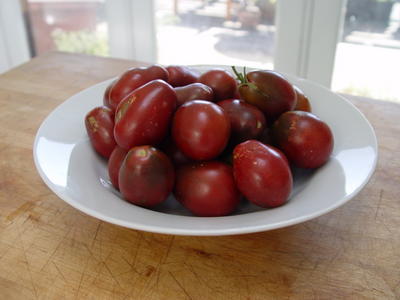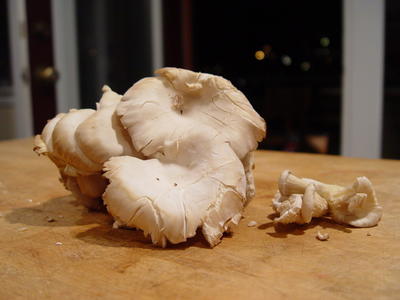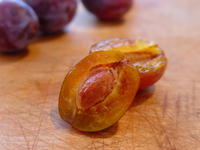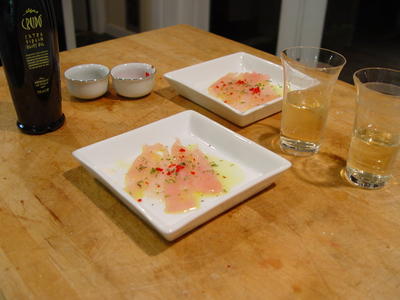 Before heading down to the market, I mentioned to several friends that I was pretty sure heirloom tomatoes were done and gone for the year. Not so. Several stands hand them for the going rate of 2.00 a pound. After a one week hiatus Wild Boar Farms returned with their beautifully distressed and obscure heirlooms (at left). The one reference to Wild Boar I was able find, indcates that they usually give with selections from over 70 varieties of tomato through early November.
Before heading down to the market, I mentioned to several friends that I was pretty sure heirloom tomatoes were done and gone for the year. Not so. Several stands hand them for the going rate of 2.00 a pound. After a one week hiatus Wild Boar Farms returned with their beautifully distressed and obscure heirlooms (at left). The one reference to Wild Boar I was able find, indcates that they usually give with selections from over 70 varieties of tomato through early November. In addition to making the Farmer's Market rounds, our Saturday ritual includes a stop at the Arizmendi Cooperative. Arizmendi emerged as a sister co-op to the Cheeseboard back in 1997. In a typical week we'll grab two Zampano, a piece or two of the always changing Saturday Focaccia, an Oat Scone, and some olives and cheese. If we're lucky, we'll get out for under 20.00.

The Chez Panisse Vegetables Cookbook indicates that Eggplant should be in season from mid-summer to early fall. Somehow eggplant didn't get my attention until this weekend though. I picked up four types including a couple thai varieties, a straight-up old school eggplant, and some Japanese eggplant. I got these all from Tip Top Farms who, after weeks of suggesting it might happen, were suddenly and totally out of Sugar Plums.




































